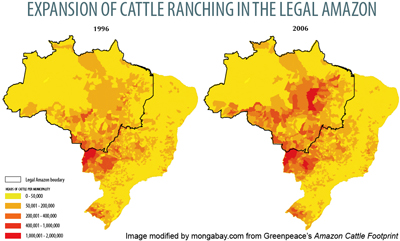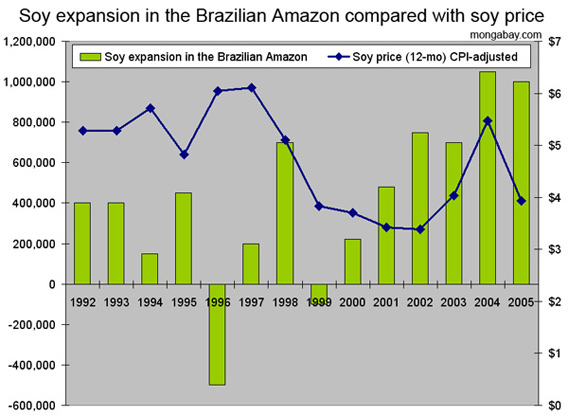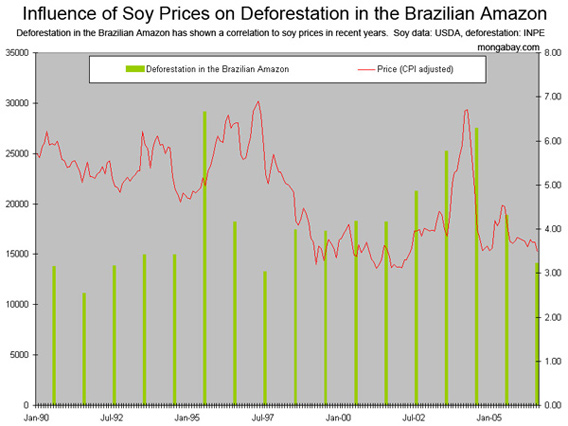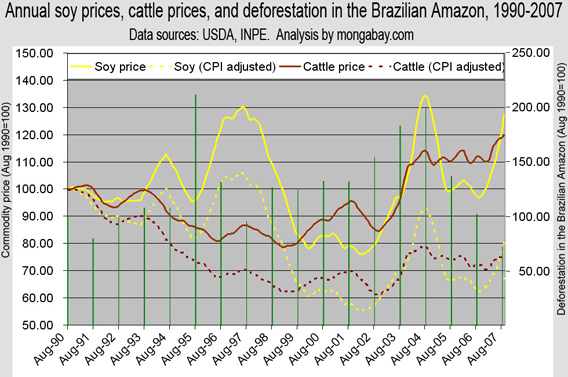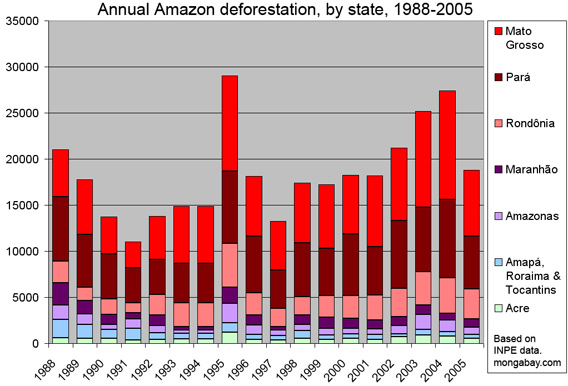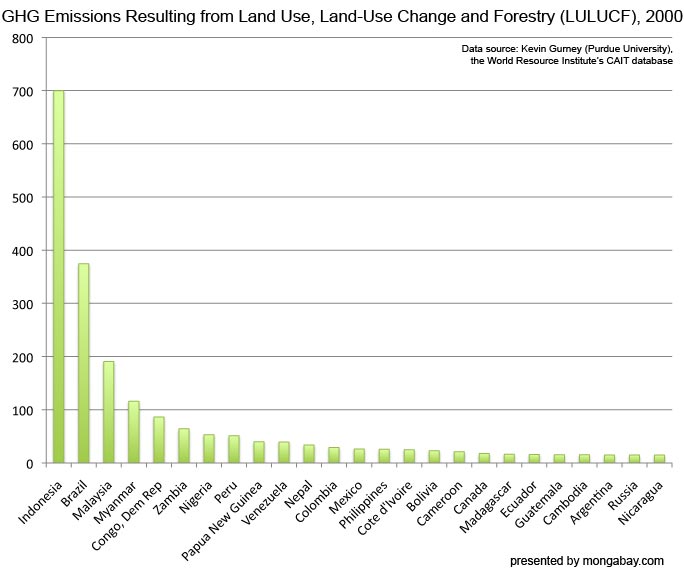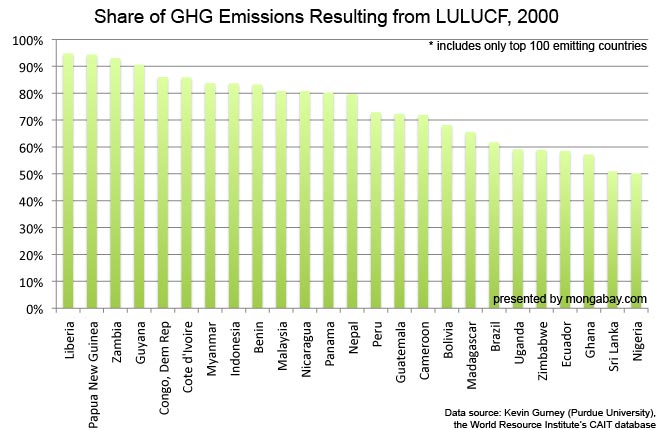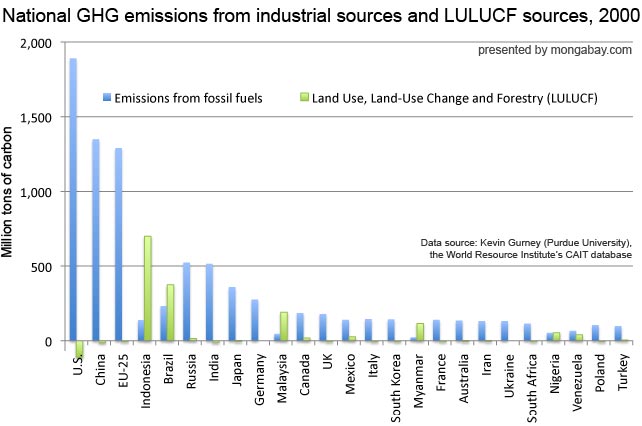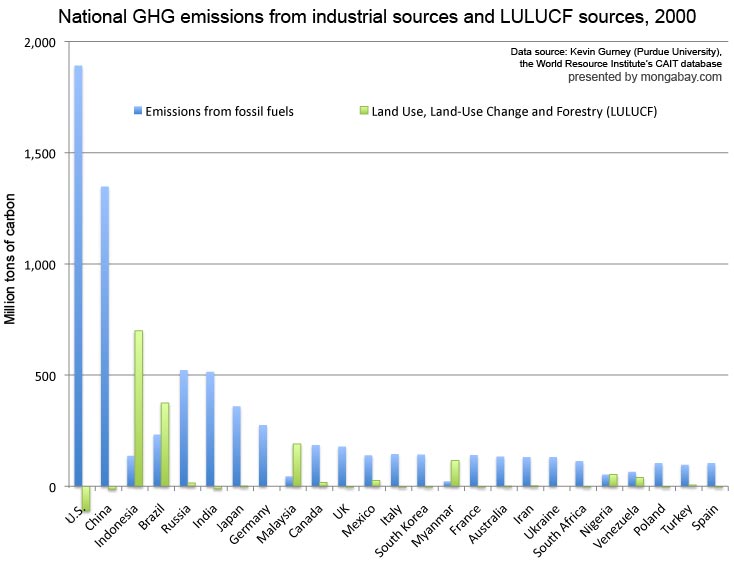|
|
Nearly 80 percent of land deforested in the Amazon from 1996-2006 is now used for cattle pasture, according to a report released today by Greenpeace at the World Social Forum in Belem, Brazil.
The report, Amazon Cattle Footprint: Mato Grosso: State of Destruction [PDF], confirms that cattle ranching is the primary driver of deforestation in Earth’s largest rainforest: the Brazilian Amazon.
Over the past decade more than 10 million hectares – an area about the size of Iceland – was cleared for cattle ranching as Brazil rose to become the world’s largest exporter of beef. Now the government aims to double the country’s share of the beef export market to 60% by 2018 through low interest loans, infrastructure expansion, and other incentives for producers. Most of this expansion is expected to occur in the Amazon were land is cheap and available — 70 percent of the country’s herd expansion between 2002 and 2006 occurred in the region.
Recent reports suggest that much of this expansion has been illegal. Laws for maintaining a “legal forest reserve” on Amazon land are widely flouted and many landowners acquire land without proper title. Corruption is rampant in frontier areas making law enforcement ineffective and sometimes complicit in illicit activities — including illegal logging and abuse of workers — that often accompany land clearing.
Beyond the loss of habitat for wildlife, land for indigenous people, and ecosystem services, environmentalists argue that destruction of the Amazon is fueling fuel climate change. In some years as much as 75 percent of Brazil’s greenhouse gas emissions result from deforestation, the vast majority of which come from Amazon forest loss. Conversion of forest land to cattle pasture results in nearly a complete loss of carbon stored in above-ground vegetation. It can also produce soil erosion, fouling waterways.
But environmentalists face a tough battle. Cattle ranchers and agribusiness (including soy farmers and owners of industrial plantations) form a powerful lobby in Brazil, especially at the state level. Many of the country’s most influential politicians are linked to the industry. At the behest of these interests, over the past year the Brazilian Congress has introduced measures that would significantly curtail the capacity of environmental NGOs and scientists to operate in the Amazon.
Nevertheless there is hope on the horizon for the environmental community. A dramatic fall in the price of nearly all agricultural commodities produced in the region, coupled with the global credit crunch, will delay some of the new investment the region has seen over the past few years. Further, a new push by Brazilian government to rein in emissions from deforestation could spur conservation at a time when land prices are stagnating relative to the explosive growth of late.
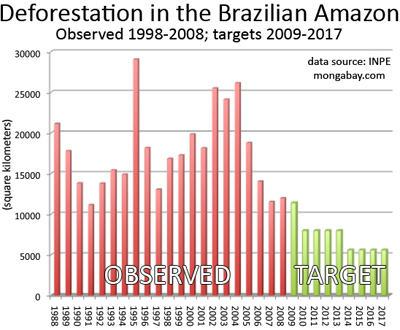 Click image to enlarge |
Under a plan proposed by the federal government, Brazil aims to establish a $21 billion fund to drastically reduce emissions from deforestation over the next decade. The plan calls for a mix of conservation measures, improve governance and law enforcement, and initiatives to promote sustainable use of the Amazon.
There are also emerging signs that industry is taking an interest in improving public perception of its environmental performance in Amazonia. Several new initiatives — including the ABIOVE moratorium on soy, Aliança da Terra for beef, and Pará’s IDEFLOR sustainable forest program — are seeking to reduce the impact of operations on the Amazon in response to pressure from the environmental lobby.
Still the Greenpeace report calls on more aggressive measures to reduce deforestation in Brazil. It urges the federal government to reach a zero deforestation target by 2015 rather than its more modest goal to cut forest clearing to 5,586 square kilometers per year by 2015. Greenpeace says Brazil can reach zero deforestation by 2015 through stronger enforcement of its existing environmental laws, including its forest code which compels landowners to keep 80 percent of their land forested; redirecting investments that promote deforestation into sustainable development programs; increasing funding for monitoring and law enforcement; adopting a 5-year moratorium on deforestation; and supporting a strong climate protocol in Copenhagen, December 2009, that includes an international fund to Reduce Emissions from Deforestation and Degradation (REDD) that adheres to key principles on environment, transparency, and social equity.
Amazon Cattle Footprint: Mato Grosso: State of Destruction [PDF]
Related articles
How to save the Amazon rainforest
(01/04/2009)
Environmentalists have long voiced concern over the vanishing Amazon rainforest, but they haven’t been particularly effective at slowing forest loss. In fact, despite the hundreds of millions of dollars in donor funds that have flowed into the region since 2000 and the establishment of more than 100 million hectares of protected areas since 2002, average annual deforestation rates have increased since the 1990s, peaking at 73,785 square kilometers (28,488 square miles) of forest loss between 2002 and 2004. With land prices fast appreciating, cattle ranching and industrial soy farms expanding, and billions of dollars’ worth of new infrastructure projects in the works, development pressure on the Amazon is expected to accelerate. Given these trends, it is apparent that conservation efforts alone will not determine the fate of the Amazon or other rainforests. Some argue that market measures, which value forests for the ecosystem services they provide as well as reward developers for environmental performance, will be the key to saving the Amazon from large-scale destruction. In the end it may be the very markets currently driving deforestation that save forests.

Amazon rainforest damage surges 67% in 2008
(12/20/2008)
The area of rainforest in the process of being deforested — razed but not yet cleared — surged in the Brazilian Amazon during 2008, according to new figures released by Brazil’s National Institute for Space Research (INPE). The announcement comes shortly after the Brazilian government reported a 4 percent increase in forest clearing for the year. Using an advanced satellite system that tracks changes in vegetation cover INPE found that 24,932 square kilometers of Amazon forest was damaged between August 2007 and July 2008, an increase of 10,017 square kilometers — 67 percent — over the prior year. The figure is in addition to the 11,968 square kilometers of forest that were completely cleared, indicating that at least 36,900 square kilometers of forest were damaged or destroyed during the year. The sum does not include areas that may have been selectively logged for commercial timber.
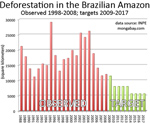
Lula pledges big cuts in Amazon deforestation — after he leaves office
(12/12/2008)
Last week Brazil unveiled plans to cut deforestation substantially from a 1996-2005 baseline of 19,533 squaure kilometers per year. The announcement met a mixed response from conservationists. Some applauded the decision to set hard targets for reducing deforestation, others say the targets were too low and that the country should aim for zero net deforestation by 2015. Nevertheless as more details have emerged, it becomes clear that the onus for reining in deforestation falls on Brazilian President Luiz Inacio Lula da Silva’s successor.
Agricultural firms cut incentives for Amazon deforestation
(12/02/2008)
As grain prices plummet and concerns over cash mount, agricultural giants are cutting loans to Brazilian farmers, reports the Wall Street Journal. Tighter farm credit may be contributing to a recent slowing in deforestation in the Brazilian Amazon, where agriculture is an increasingly important driver of forest clearing.
Slowing global economy will reduce Amazon deforestation
(10/08/2008)
The global financial crisis will likely slow forest clearing in the Amazon rainforest, said Brazil’s environment minister. Falling commodity prices combined with tighter credit and increased aversion to risk will undermine the economics of activities — including logging and agricultural expansion — that are key drivers of deforestation in the Brazilian Amazon. Forest clearing in the region has shown an increasingly tight correlation to beef and soy prices in recent years. Both products are produced on cleared rainforest lands.
Anti-NGO rhetoric in Brazil a response to environmental criticism says environment minister
(10/08/2008)
Accusations against foreign environmental groups operating in the Brazilian Amazon are “exaggerated” to deflect criticism on high deforestation rates in the region said Brazil’s environment minister at a summit in Brasilia.
Future threats to the Amazon rainforest
(07/31/2008)
Between June 2000 and June 2008, more than 150,000 square kilometers of rainforest were cleared in the Brazilian Amazon. While deforestation rates have slowed since 2004, forest loss is expected to continue for the foreseeable future. This is a look at past, current and potential future drivers of deforestation in the Brazilian Amazon.
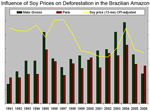
2007 Amazon fires among worst ever
(10/22/2007)
By some measures, forest fires in the Amazon are at near-record levels, according to analysis Brazilian satellite data by mongabay.com. A surge in soy and cattle prices may be contributing to an increase in deforestation since last year. Last year environmentalists and the Brazilian government heralded a sharp fall in deforestation rates, the third consecutive annual decline after a peak in 2004. Forest loss in the 2006-2007 season was the lowest since record-keeping began in the late in 1970s. While the government tried to claim credit for the drop, analysts at the time said that commodity prices were a more likely driver of slow down: both cattle and soy prices had declined significantly over the previous months.
More news on the Amazon
CHARTS
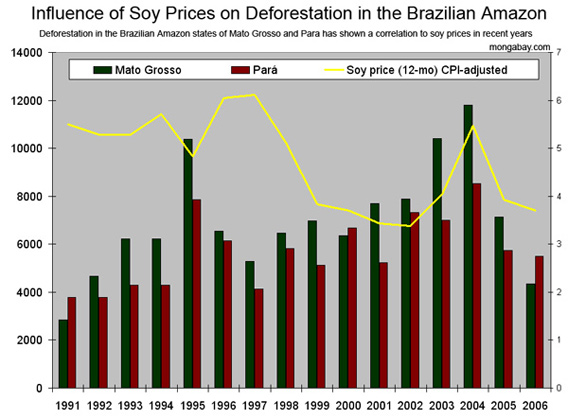
Influence of soy prices (CPI-adjusted, 12-month moving average) on deforestation in the Brazilian Amazon. Deforestation in the states of Mato Grosso and Para has shown a particularly strong correlation to soy prices in recent years. All figures in hectares (2.47 acres).
|
